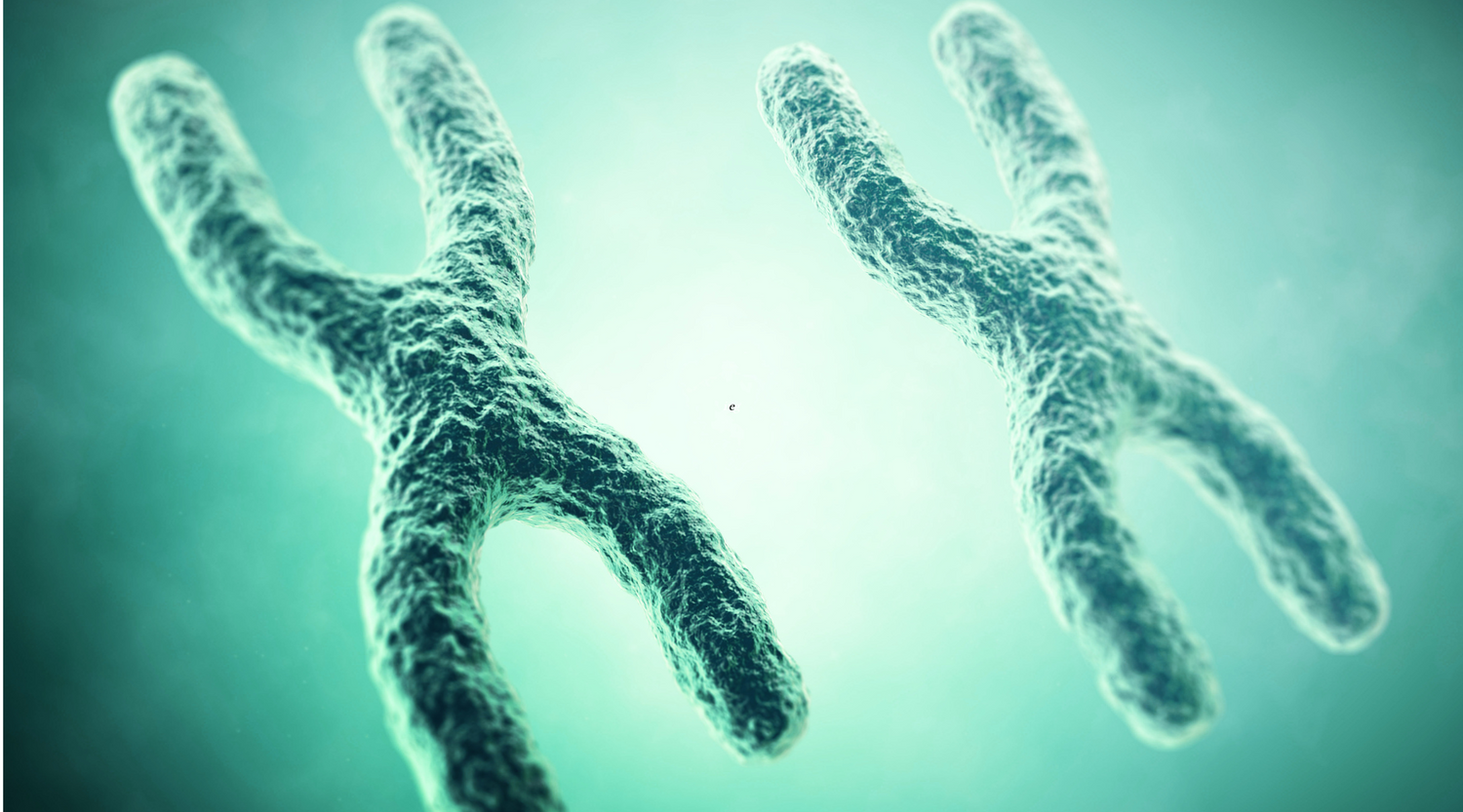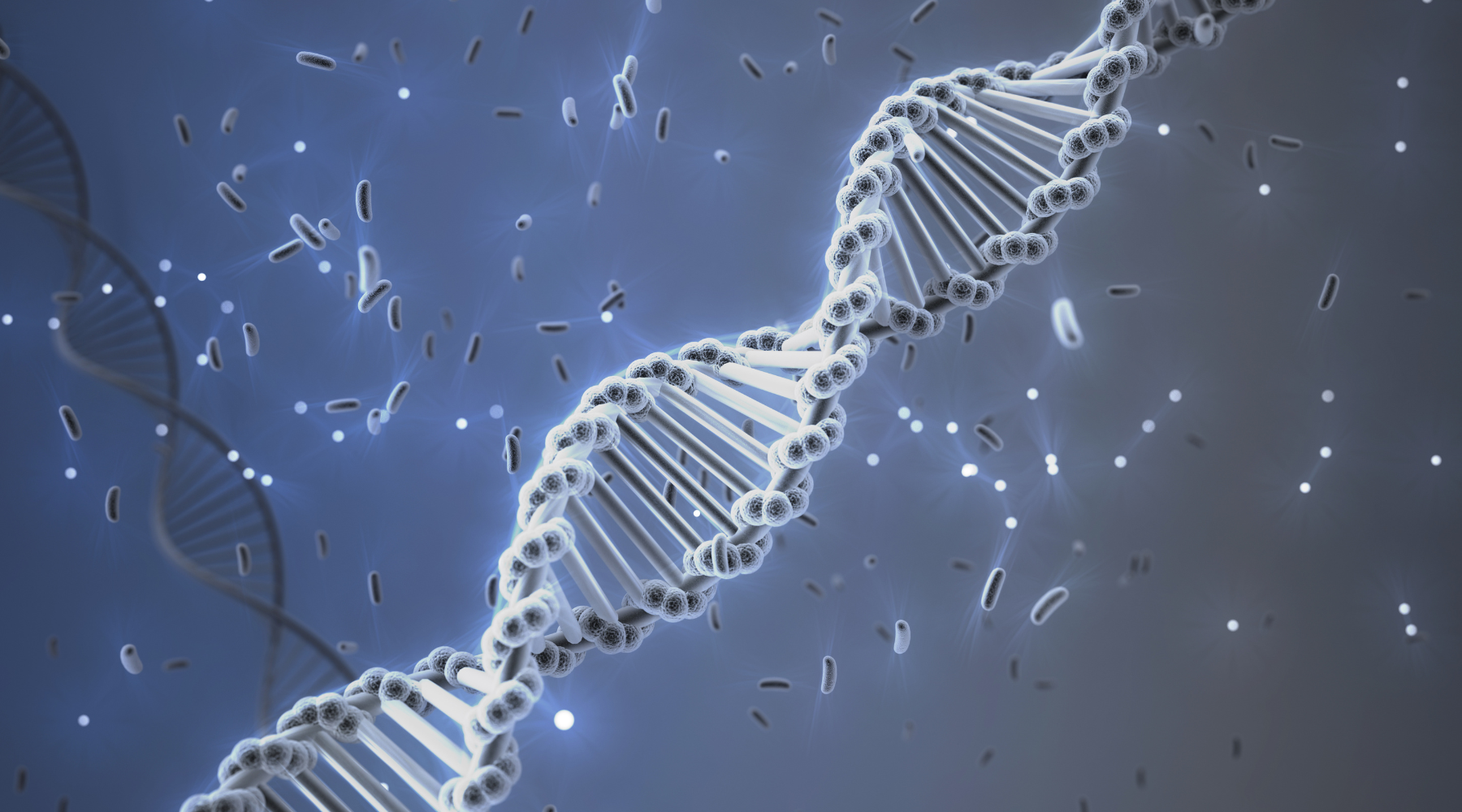In the last blog post discussing Hallmark of Aging #1, genomic instability, we talked a lot about how DNA damage accompanies aging. A particular brand of DNA damage is telomere attrition or loss, the second hallmark.
Here, again, it’s good to understand a few things about DNA...
DNA: A recap
Chromosomes
DNA is not just one long double helix. Instead, it is divided into a number of sections of uneven length. At certain points in the cell cycle – the series of events that take place for a cell to divide into two daughter cells – the nuclear DNA is organized into chromosomes. Chromosomes are a key part of the process that ensures DNA is accurately copied and distributed in the vast majority of cell divisions. Humans have 46 chromosomes (two sets of 23 chromosomes). If you are envisioning 23 sets of the letter X, you’re not too far off.
What are telomeres?
The ends of each chromosome (the tips of the Xs) are called telomeres, which have a few functions. Every time your cells divide, copies of the chromosomes are made, but a bit of the telomere is lost. The DNA is, to an extent, designed for this loss, as the DNA found in the telomere is noncoding (doesn’t code for a protein) and is essentially a pattern repeated over and over for thousands of base pairs. Eventually, when all of the telomere DNA is lost (after about 50 divisions), the cell can no longer replicate and dies; the limit to the number of divisions, called the Hayflick limit, applies to all cells except stem cells.
Telomeres are bound by a multiprotein complex called shelterin, which prevents DNA repair proteins from accessing the telomeres and being “repaired” as DNA breaks. This is important because it prevents the chromosomes from fusing together. Because shelterin prevents the DNA repair proteins from accessing the DNA, damage in the telomere is both persistent and highly efficient in inducing senescence and/or apoptosis.
Hallmark of Aging criteria
A reminder that to be named a hallmark of aging, telomere attrition must fulfill three criteria: Telomere attrition happens during normal aging, after every cell division, so it fulfills the first hallmark of aging. To fulfill the next two criteria—accelerate telomere loss or dysfunction to accelerate aging and decelerate loss to slow aging—takes us back to the lab (at least through some pretty impressive publications).
What is Telomere Attrition?
Telomere deficiency (due to shelterin) leads to aging
Dysfunction or deficiency in the shelterin complex cause telomere uncapping (you don’t want that), chromosome fusions (you don’t want that either), and some cases of disease like aplastic anemia, among others. The various loss-of-function models, models in which scientists have modified the shelterin complex so it is nonfunctional, are characterized by the rapid decline of the regenerative capacity of tissues and accelerated aging. Notably, when the shelterin complex is knocked down but the length of the telomere is normal, tissue decline and accelerated aging still occur.
Longer telomeres, longer life
Many animal studies have established causal links between telomere loss, cellular senescence, and organismal aging. For mice at least, shortened telomeres mean decreased lifespans and lengthened telomeres mean increased lifespans. This idea is supported in humans. For example, cells whose telomeres are not as readily lost, like white blood cells, generally live longer.
More divisions, more damage
Because we know from the first hallmark that genetic damage accumulates as we age – or, on a cellular level, the more a cell divides – the later stage divisions have more likelihood of passing on genetic damage. Longer telomeres afford cells additional divisions during which mutations can creep into the genetic code. One such mutation is the activation of telomerase in differentiated cells.
Telomerase
Telomerase is an enzyme that adds telomere repeat sequences to the end of telomeres. These enzymes are normally activated only in sex (eggs and sperm), stem, or tumor cells. In the lab, adding telomerase is sufficient to confer immortality to otherwise mortal cells. A study in 2011 by Jaskelioff et al also showed that prematurely aging in mice can be reverted by telomerase activation. Further, in a 2012 study, normal aging in wild-type (normal) mice can be delayed without increasing the incidence of cancer with regular viral transduction of telomerase. A 2013 meta-analysis supports the strong relation between short telomeres and mortality risk.
A quick recap:
To grow and function properly, an organism’s cells must produce new cells to replace old, worn-out cells. They do this through cell division. The number of times a cell can divide is restricted by the length of its telomeres. When the telomeres are dysfunctional, or unusually short, premature development of diseases and aging occurs. When the telomere length is long or maintained, cells can live longer. All the hallmarks of aging are fulfilled and it seems the fight against aging has, at last, a simple answer: Let’s figure out a way to lengthen telomeres and we’ll all live longer!
Why not? Cancer.
The Big C. In the large majority of cancer cells, telomere length is maintained by telomerase. It turns out that telomerase and telomere length is crucial for both cancer initiation and the maintenance of tumors. “The data show that if you’re born with long telomeres, you are at greater risk of getting cancer, ” said Titia de Lange, Leon Hess Professor at Rockefeller University, in a 2020 article discussing her work.
The Future
The mechanisms for maintaining telomere length and activating telomerase are, of course, complex. A more in-depth understanding of these mechanisms is the focus of many a cancer biologist (and anti-aging enthusiasts, I imagine). It is possible that regulating telomere length may enable both successful cancer and longevity treatment (or prevention!).
Written by: Katsume Stoneham, BS, Molecular Biology, MA, Public Health




Leave a comment
All comments are moderated before being published.
This site is protected by hCaptcha and the hCaptcha Privacy Policy and Terms of Service apply.